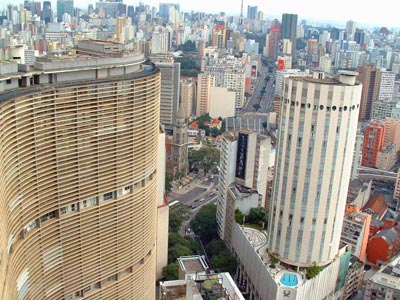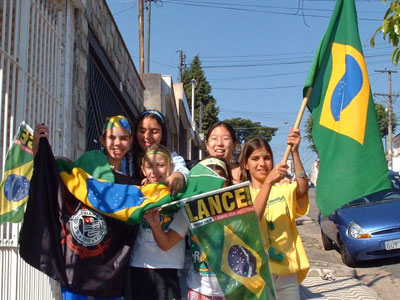Next Stop: São Paulo
When I moved to San Francisco for college, I abandoned all driving privileges and relied solely on public transportation. I became a bus guru, navigating around the city with a tattered, well-used bus map. My roommate and I explored all the bus routes, finding ourselves in areas that my native San Franciscan friends had never even heard of.

However, all the ticket stubs and color-coded subway lines could never prepare me for six months spent among the monstrous tangle of highways, cars, and buses of São Paulo. I experienced a transportation culture shock, and all my prideful wisdom about traffic and public transportation became useless.
Traffic never seems light in São Paulo. All the cars are small, which allows the highways to be crammed. Cars are often mere inches from one another. Surface streets aren’t accommodating to passengers, either. Potholes, uprooted concrete, and shredded tires are typical on every street.
The drive to work often took an hour, sometimes two, depending on traffic. On Mondays, the drive would be longer due to the "rodizio." Depending on the last digit of the license plate, drivers are told to avoid highly trafficked areas on a specific day during certain hours. My ride ignored these rules and took back roads. Once we reached a main road, she’d zoom past the traffic monitors who were hastily scribbling down license numbers of the rodizio delinquents.
The bus system was another story. For starters, the locals laughed when I asked for a bus map. Can 2.5 million daily bus riders really get around without any sort of map? My co-workers carefully planned out a route for me, filling in as many blanks as possible.
"You have to hail the bus," they told me. "Or else, it won’t stop for you."
Hail a bus? Don’t they just stop at their designated points? Riding the bus São Paulo-style means stepping out to the curb and holding your hand out when your bus approaches. Hail it too late and you‘ll end up waiting anywhere from a few minutes to nearly an hour for the next bus.
Finding the correct bus is another challenge. One day I got on a bus labeled "Santo Amaro." A few days later, I saw another bus also labeled "Santo Amaro" at the exact same stop, but it took me to a different destination. Little did I know that the bus route was determined by the number, not the name, of the bus line. To make things more confusing, the bus could drop you off at one stop going one direction, and then take a completely different route on the way back—nowhere near the stop where it previously let you off.
Once on the bus, a "ticket agent" seated on your left takes your ticket before granting you entry through a turnstile. While elderly passengers sit up front close to the driver, adolescents often slide under the turnstile to avoid payment and proceed to the back of the bus.
After hearing so much about muggings in Brazil, I always kept my backpack close to my chest while riding on the bus. However, bus etiquette meant that seated passengers offered to hold the bags of those standing next to them. At first, this made me suspicious, but I soon noticed that this was common practice. After a while, I found myself offering to hold the bags of passengers around me if I was seated.

Rainy days (and there are many) in São Paulo meant traffic was ten times worse than it was on normal days. I recall one particularly stormy day that started off sunny. Cars were stalled in intersections with the water level reaching halfway up the side of their cars. People were huddled under storefronts just waiting for the storm to pass. They all stared wide-eyed at the frantic pedestrians still dancing through puddles, caught in the rain.
I was riding the bus that day and had no other option but to endure the storm to get home. I stepped off the bus into a torrent of rainwater, rushing down the street. There was no way to stay dry. As I walked home, my jeans became heavier and heavier, and all I could think about was keeping my camera dry in my backpack. I took off my socks and shoes to walk in knee-level water, and I climbed on the rungs of a low fence to carry myself over deeper water. To top it all, the electricity was out at my apartment complex, which meant walking up nine flights of stairs. When I finally reached the apartment, I stood in the doorway, shivering, dripping, just trying to catch my breath.
But I made it. I had survived. I soon realized that it was more than just surviving one stormy day. I could ride the bus without looking like a foreigner and was even able to ask directions from my fellow bus riders. I could hail the right bus and transfer to the next one flawlessly. Now, I could truly say that I’m a public transportation guru.
